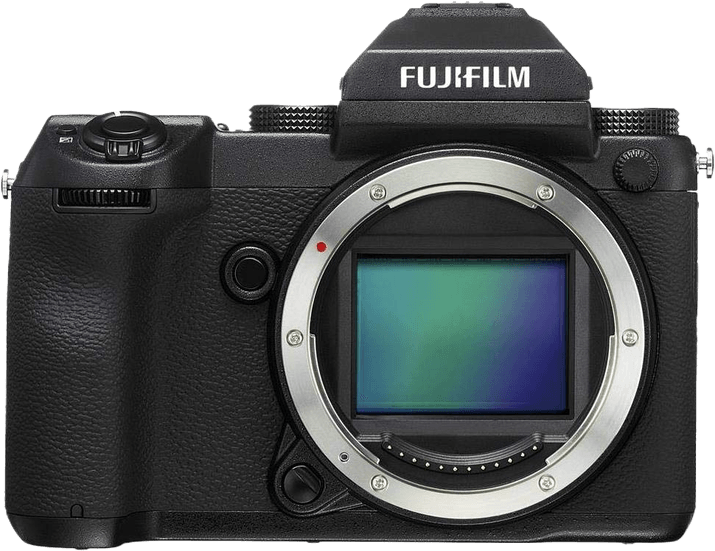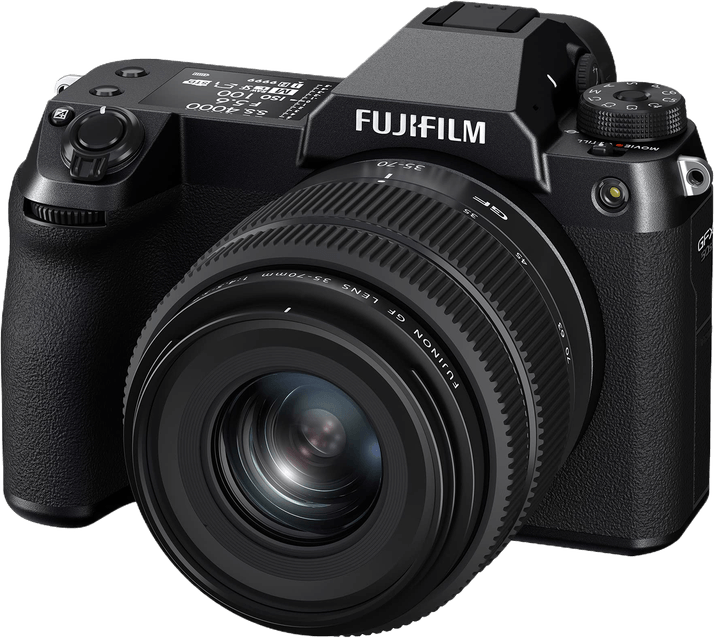Fujifilm GFX 50S vs GFX 50S II Comparison
Fujifilm GFX 50S

Fujifilm GFX 50S II

The Fujifilm GFX 50S II edges out the original GFX 50S with a score of 79/100 compared to 78/100. Both cameras are mirrorless and share similar dimensions, with the GFX 50S measuring 148 x 94 x 91mm and the GFX 50S II at 150 x 104 x 87mm. They also have a close weight, with the GFX 50S at 920g and the GFX 50S II slightly lighter at 900g.
The GFX 50S II’s higher score reflects its improvements over the GFX 50S. Notably, it offers a more affordable launch price of $3999 compared to the GFX 50S’s $6499. Additionally, its slightly lighter weight makes it more comfortable for extended use.
The GFX 50S does not have any clear advantages over the GFX 50S II. The minor differences in size and weight are negligible, and the higher launch price makes it less appealing.
Considering the GFX 50S II’s lower price and slightly lighter weight, it is the better choice between the two cameras. The minor differences in size do not significantly impact the user experience, making the GFX 50S II a more attractive option.
Fujifilm GFX 50S vs GFX 50S II Overview and Optics
The Fujifilm GFX 50S and Fujifilm GFX 50S II both receive a score of 77/100 for their optics, indicating that these cameras share many similarities in this aspect. Both cameras boast 51-megapixel resolution, a shooting speed of 3 frames per second, and CMOS sensor type. Additionally, they both have a medium format sensor size, Fujifilm G lens mount, and image stabilization features.
The GFX 50S II has a slight edge over the GFX 50S in terms of processing power, as it utilizes the X-Processor 4, while the GFX 50S uses the X-Processor Pro. This difference means that the GFX 50S II can process images faster and more efficiently, providing a smoother and more responsive user experience.
On the other hand, the GFX 50S has a 3:2 aspect ratio compared to the GFX 50S II’s 4:3 aspect ratio. This difference may be advantageous for photographers who prefer a wider aspect ratio when capturing images, as the 3:2 ratio offers a broader field of view.
In terms of optics, both cameras are highly similar and provide excellent image quality. The GFX 50S II’s improved processor gives it a slight advantage in processing speed, while the GFX 50S offers a wider aspect ratio for those who prefer it. Both cameras are solid choices for photographers seeking high-quality optics and performance, with the choice ultimately depending on personal preferences and specific needs.
Fujifilm GFX 50S vs GFX 50S II Video Performance
When it comes to video capabilities, the Fujifilm GFX 50S does not offer any video functionality. Therefore, this section will focus solely on the video features of the Fujifilm GFX 50S II.
The Fujifilm GFX 50S II has a video score of 57 out of 100. It provides Full HD video resolution, with maximum dimensions of 1920 x 1080. The camera supports a maximum video frame rate of 30 frames per second, which is suitable for most general video recording needs. Additionally, the GFX 50S II includes built-in time-lapse functionality, allowing users to create dynamic and visually appealing time-lapse videos.
Taking the video capabilities into account, it is clear that the Fujifilm GFX 50S II is the better choice for those who require video functionality in their camera. While the GFX 50S may suffice for photographers who do not need video capabilities, the GFX 50S II offers a more versatile option for users who want both high-quality photography and video features in a single device.
Fujifilm GFX 50S vs GFX 50S II Features and Benefits
The Fujifilm GFX 50S II emerges as the winner in this comparison with a feature score of 144/100, while the Fujifilm GFX 50S trails behind with a score of 87/100. Both cameras share numerous specifications, which include a 3.2-inch screen size, 2,360,000-dot screen resolution, touchscreen capability, absence of GPS, and the presence of both WIFI and Bluetooth connectivity.
The GFX 50S II outperforms the GFX 50S in one key area: the presence of a flip screen. This feature allows for greater flexibility when composing shots, particularly in challenging angles or when capturing self-portraits. The flip screen adds significant value to the GFX 50S II, contributing to its higher feature score.
On the other hand, the GFX 50S does not offer any notable advantages over the GFX 50S II. Both cameras share most of their specifications, and the lack of a flip screen in the GFX 50S puts it at a disadvantage compared to its successor.
Taking these factors into account, the Fujifilm GFX 50S II is the clear winner in this comparison. Its flip screen feature provides users with increased versatility when framing shots, setting it apart from the GFX 50S. In contrast, the Fujifilm GFX 50S does not offer any unique advantages over the GFX 50S II, making it a less appealing option for photographers seeking a camera with superior features.
Fujifilm GFX 50S vs GFX 50S II Storage and Battery
The Fujifilm GFX 50S II outperforms the Fujifilm GFX 50S in storage and battery, scoring 71/100 compared to the latter’s 57/100. Both cameras share common specifications, including two memory card slots and compatibility with SD, SDHC, and SDXC (UHS-II) memory cards.
The GFX 50S II has a longer battery life of 440 shots, while the GFX 50S offers 400 shots. Furthermore, the GFX 50S II uses the NP-W235 battery type and supports USB charging, making it more convenient for users.
On the other hand, the GFX 50S has the NP-T125 battery type and lacks USB charging. However, this does not make the camera significantly worse in terms of storage and battery.
Considering these differences, the Fujifilm GFX 50S II is the superior choice for storage and battery life, while the Fujifilm GFX 50S still offers decent performance in these areas.
Fujifilm GFX 50S vs GFX 50S II – Our Verdict
Are you still undecided about which camera is right for you? Have a look at these popular comparisons that feature the Fujifilm GFX 50S or the Fujifilm GFX 50S II:

